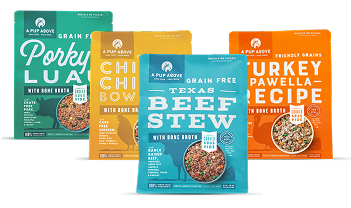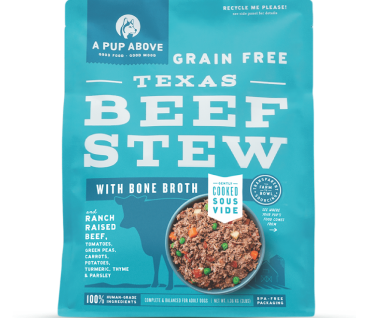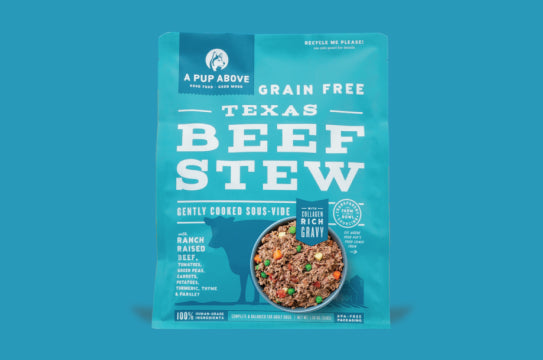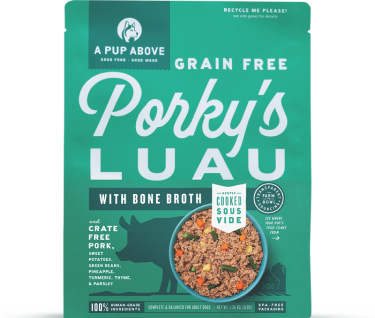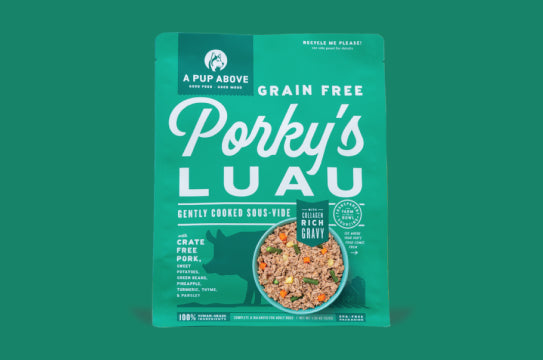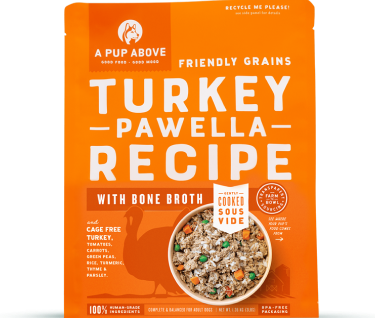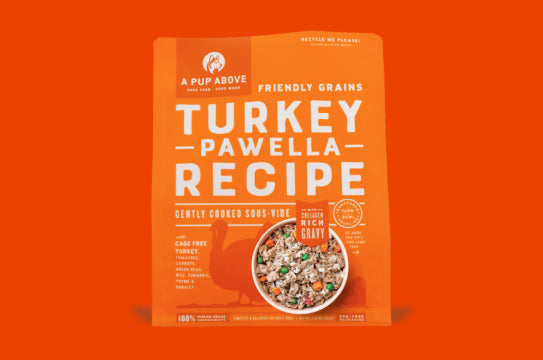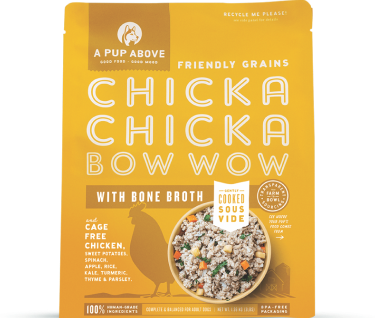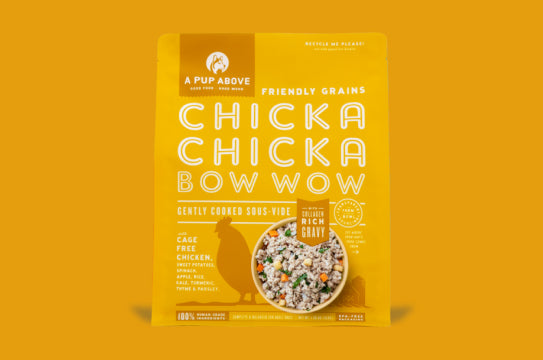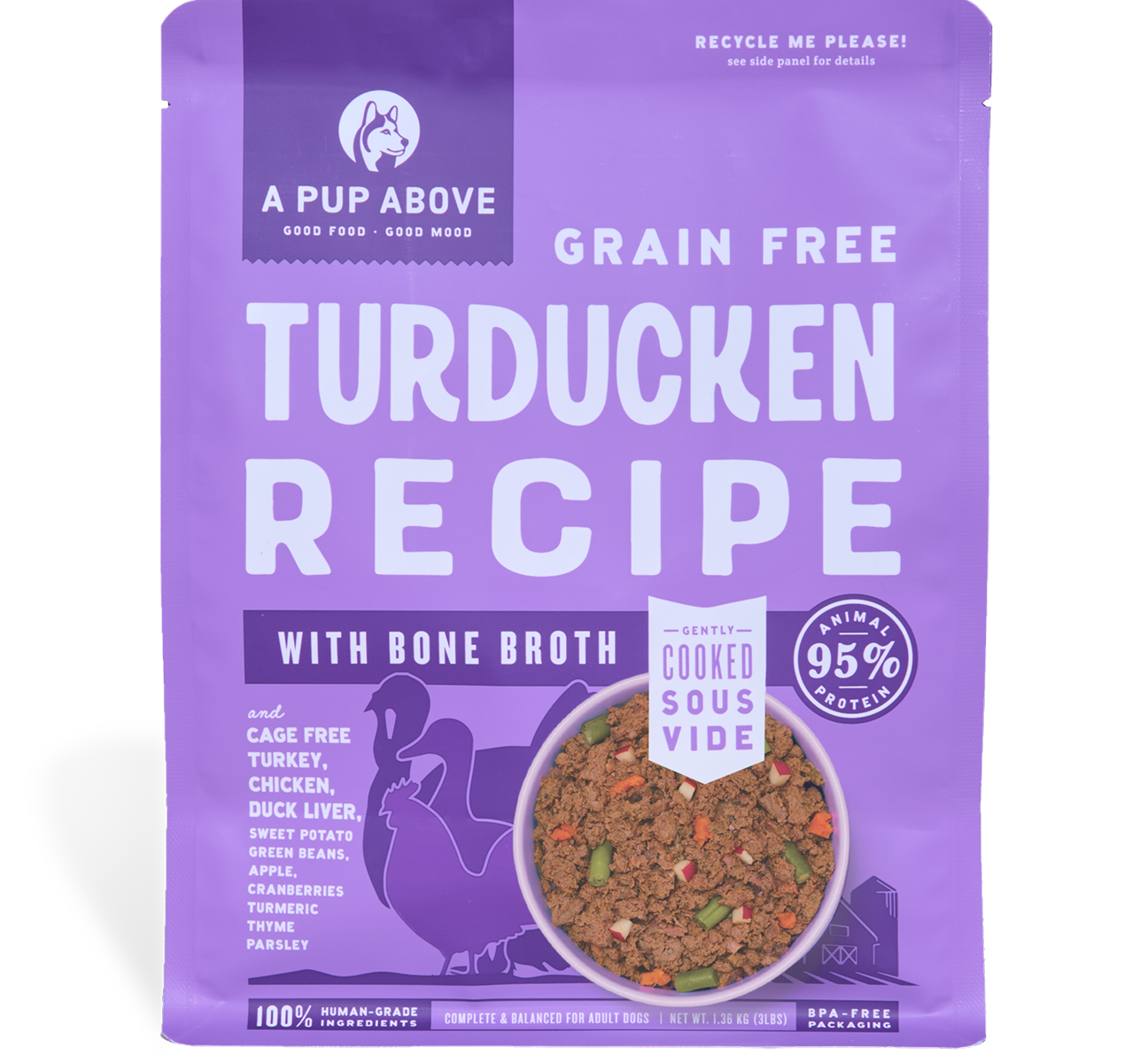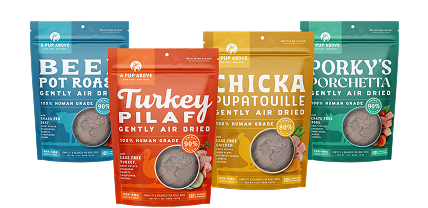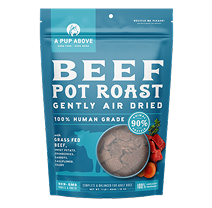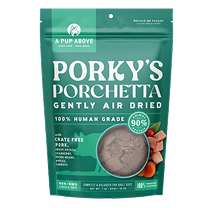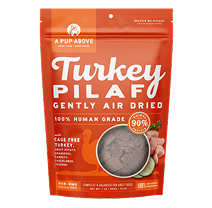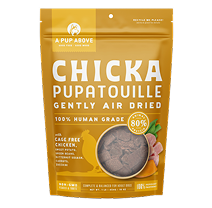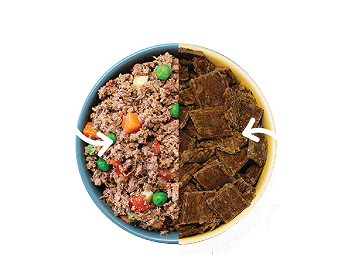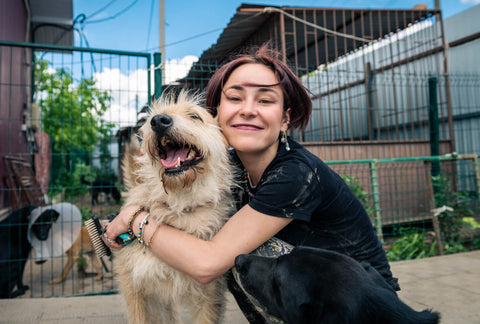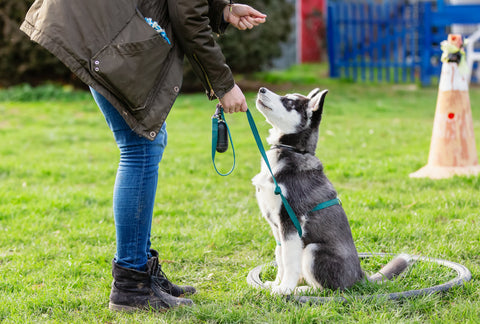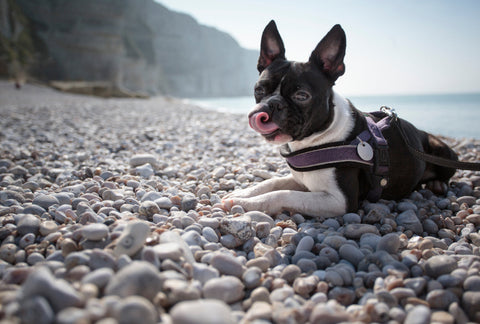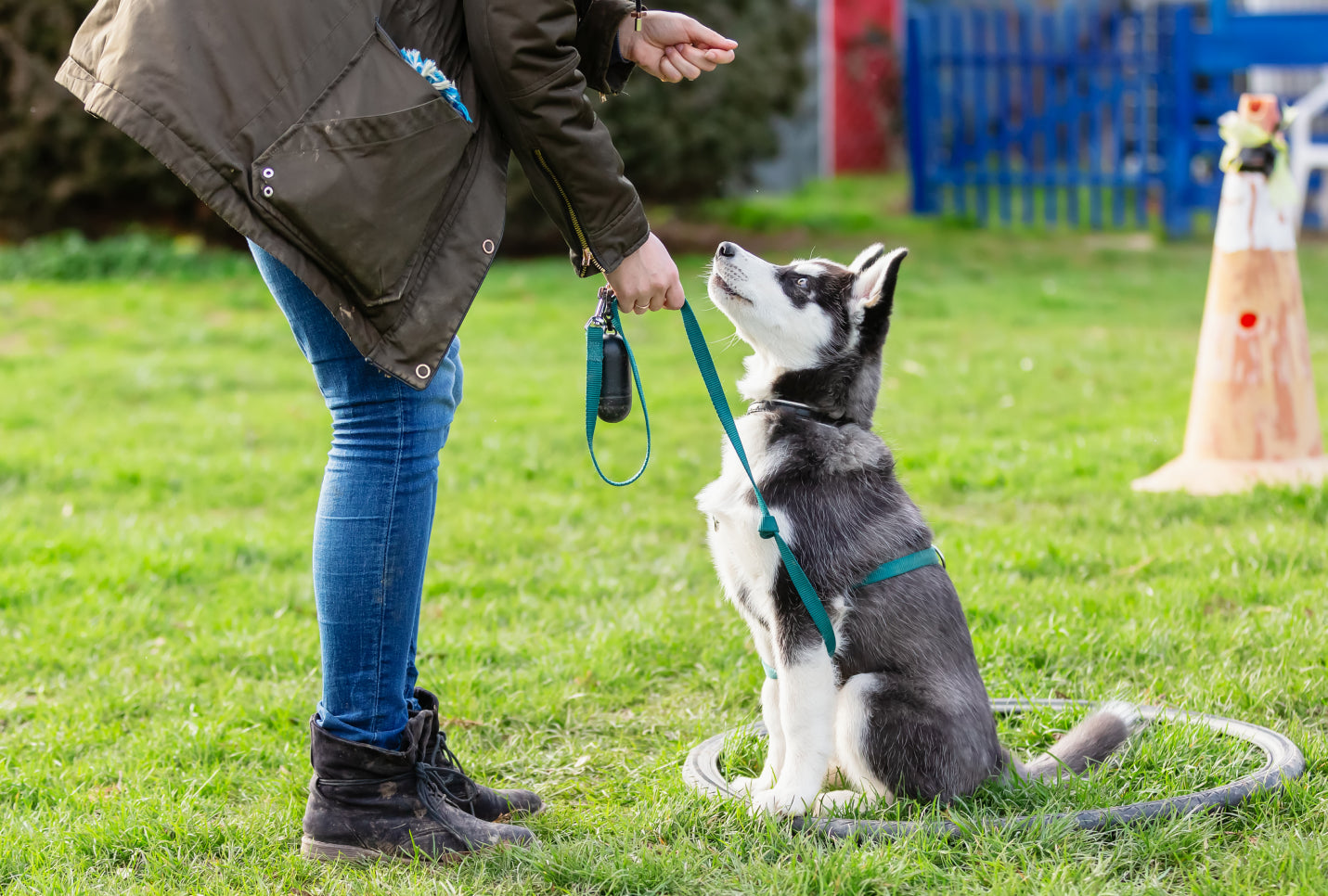
How To Leash Train a Puppy
Imagine a sunny day at the park, children laughing, birds chirping, and your lively pup darting around without a care in the world.
Sounds delightful, right? Yet, without proper leash training, such an idyllic scene can quickly become stressful. This is why leash training your puppy is essential to raising a happy, well-behaved pet.
In this comprehensive guide, we'll dive into the why's, when's, and how's of leash training, ensuring you and your furry friend can enjoy walks with confidence and ease.
Why Is Leash Training Important?
Leash training goes beyond ensuring that your pup doesn't dash off at the sight of a squirrel. It's a matter of safety, respect, and overall pet wellness.
When you leash train your puppy, you are ensuring their safety, as a leash can prevent them from running into a dangerous situation, like a busy street or an unfriendly animal.
Moreover, leash training is about respect — respect for others in public spaces. Not everyone is comfortable around dogs, and a leashed pet shows you're mindful of others' space and peace of mind. It also helps avoid awkward encounters with other animals.
But leash training isn't just about control; it's about your puppy's health and behavior too. Regular walks on a leash contribute to your pet's physical health and provide mental stimulation. They also teach your pup how to interact with the world under your guidance, helping them grow into a well-behaved and sociable adult dog.
Remember, every moment you spend training your pup is a brick in the foundation of a lifelong bond between the two of you. Happy walking!
Why Do I Need a Leash?
Even the most well-trained dogs wear leashes and collars in public. Consider Police or even Search and Rescue K-9, who are trained their entire lives to become some of the hardest working, most obedient dogs around the world. When these dogs are in public, they are on a leash close to their handlers' side.
And while yes, often there is no tension on that leash, and it may at first appear redundant, it's essential for the dog’s safety.
It’s not just about if your dog can listen. It’s about having absolute control if something were to happen. If a less-trained dog were to approach you, you’d want that absolute control to pull your dog behind you and to safety.
If a child were to run up to pet your dog without asking, you’d want to know exactly where your dog is and, more important, their head is so they don’t get startled.
The Right Time To Start Leash Training
You may wonder, “When is the best time to start leash training my puppy?”
The answer is as soon as possible! Puppies are incredibly receptive and quick learners.
Typically, around eight weeks of age is a good time to introduce your puppy to a leash and collar. However, remember that each puppy is unique, and the perfect time could vary slightly.
In the early stages, it's not about mastering the walk but about getting your puppy used to the feel of a collar and leash. Positive experiences with the leash at a young age can set the stage for easier and more effective training as your pup grows.
Choosing the Right Leash and Collar
Selecting the right gear is a crucial step in the leash training process. When choosing a collar, a flat, adjustable collar made of nylon or soft leather is a good start for most puppies as they’re comfortable and help the pup get used to wearing something around their neck all the time.
Ensure it's snug but not too tight — you should be able to comfortably slip two fingers between the collar and your puppy's neck.
Another great option is a flat adjustable collar with a small slip or tightening section. This will allow your dog to be comfortable, but if they do pull, the slight tightening will ensure the collar won’t slip past the jaw and off their head.
As for leashes, a light four- to six-foot leash is ideal for training purposes. Flexi-leashes or retractable leashes arenot recommended for training as they don't allow optimal control and can easily entangle a bouncy, curious pup.
Training leads or slip leads are also a great option for your dog, as they allow an adjusting leash/collar mix that gives you optimal control at all times.
When training, you want to adjust the collar higher on the neck, just behind the jaw. This will give you more control over your dog’s head and reduce pulling. A collar that is low on the neck, near the shoulders, will give you little control, and the dog can pull against it as hard as they’d like.
Remember, a quality leash and collar are about safety and control and your pup's comfort. Avoid any products that could cause your puppy discomfort or harm. Your puppy should feel happy and comfortable when it's time for a walk. This positive association will make the training process smoother and more successful.
Step-by-Step Guide to Leash Training
Training your puppy to walk on a leash can seem daunting, but a patient and consistent approach can make for a rewarding process for both of you.
Here's a step-by-step guide to help make leash training as smooth as possible:
- Introduction to the Leash and Collar: Let your puppy wear the collar around the house for short periods so they can get used to the feel of it. Introduce the leash in a similarly non-threatening way, letting them sniff and interact with it during playtime. That said, a leash isn’t a chew toy, don’t let them bite the leash.
- First Steps Indoors: Clip the leash onto your pup's collar while indoors. Let them lead the way and explore. Keep the leash loose, but ensure your pup doesn't turn this into a game of tug-of-war!
- Guided Walks Indoors: Begin guiding your pup around the house on the leash. Use treats and positive reinforcement to reward calm, compliant behavior.
- Mastering the Command “Come”: Practice the “come” command before venturing outdoors. With the leash on, crouch down at your puppy's level, and call them to you. Praise them profusely and offer a treat when they come.
- Venturing Outside: Once your pup is comfortable with the leash indoors, it's time to explore the outside world. Start with short walks in a quiet, enclosed area. As your pup becomes more confident, gradually introduce them to busier environments.
- Dealing With Distractions: The outside world is full of interesting smells, sights, and sounds that can distract your puppy. Maintain a short, but not tight, leash and use the “come” command to keep your pup's attention.
- Addressing Leash Pulling: Stop walking if your puppy pulls on the leash. Only start again when the leash is slack. Your puppy will soon learn that pulling won't get them anywhere faster.
- Consistency Is Key: Consistency in your commands and expectations is vital for successful leash training. Keep training sessions short but regular, and gradually increase the length and complexity of walks.
Remember, each puppy is unique and will learn at their own pace. Patience, positive reinforcement, and consistency are your most powerful tools. Celebrate small victories; before you know it, your pup will be a pro at leash walking.
How Does Nutrition Affect Training?
Did you know that your puppy's nutrition can play a significant role in their ability to learn and follow commands during leash training? A healthy, well-balanced diet is essential for their overall well-being, cognitive function, and energy levels.
At A Pup Above, we understand the importance of nutrition in supporting your puppy's training success. Our carefully crafted, gently cooked, sous-vide meals are packed with high-quality ingredients, including real meats, vegetables, and even bone broth.
This combination provides essential nutrients, such as protein, vitamins, and minerals, crucial for your puppy's growth and mental development. Feeding your pup a nutrition-focused diet can enhance their cognitive abilities, making it easier for them to grasp leash training commands and respond positively to your guidance. Plus, our meals' delicious flavors and aromas will make training sessions even more enjoyable for your furry friend.
When it comes to leash training, consistency is key. Incorporating A Pup Above meals into your pup's diet ensures they receive the nourishment they need for optimal brain function and learning ability. Remember, a well-fed puppy is a happy and focused learner!
How Can I Maintain Good Leash Behavior?
Congratulations! You've successfully leash trained your puppy, and now you want to maintain those good leash habits.
Here are some essential tips to help you and your pup continue enjoying stress-free walks:
- Stay Consistent: Keep practicing good leash behavior regularly to reinforce positive habits. Even a well-trained pup can benefit from ongoing training and reinforcement.
- Positive Reinforcement: Continue using treats, praise, and rewards to encourage your pup's good leash behavior. Reward them for walking calmly by your side and responding promptly to commands.
- Avoid Punishment: Never resort to punishment or harsh corrections when your puppy misbehaves on the leash. This can create fear or anxiety and may undo the progress you've made. Instead, redirect their attention and reward desired behavior.
- Stay Focused: Pay attention to your pup's body language and be aware of any potential triggers that may cause them to pull or become anxious.
- Maintain a Balanced Walk: Vary your walking routes to provide mental stimulation for your pup. Allow them to explore their surroundings within safe boundaries, and remember to strike a balance between structured walking and allowing sniffing breaks.
Following these tips and maintaining a positive and consistent approach will ensure your puppy's good leash behavior remains a lasting habit.
Go For a Walk
Leash training your puppy is a vital investment in their safety, well-being, and your relationship.
By following the step-by-step guide, choosing the right gear, and maintaining consistency, you can ensure enjoyable walks with your furry companion. Remember to provide positive reinforcement, avoid punishment, and stay focused during training sessions.
Additionally, the role of nutrition in training success should not be overlooked. A Pup Above's nutrition-focused meals can support your puppy's cognitive abilities and overall health.
So, grab that leash, embrace the training process, and embark on a journey of exploration and companionship with your well-trained pup by your side.
Sources:
Search & Rescue Dog Training | Highland Canine Training
How to stop your dog's chewing and biting problem | The Humane Society of the United States
Distractions: Training Your Dog To Ignore Distractions In Any Environment | AKC
Top Stories
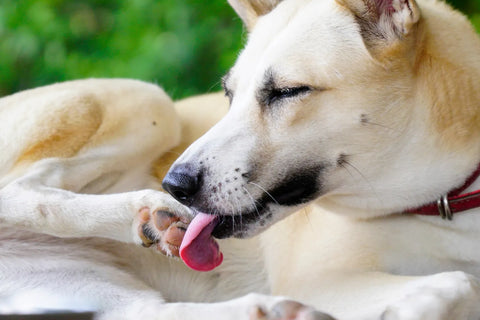
Why Do Dogs Lick Their Paws?
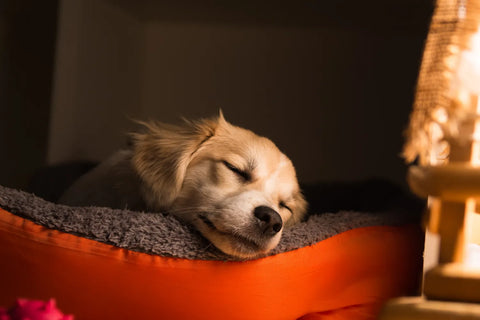
Why Do Dogs Whimper & Make Noises in Their Sleep?
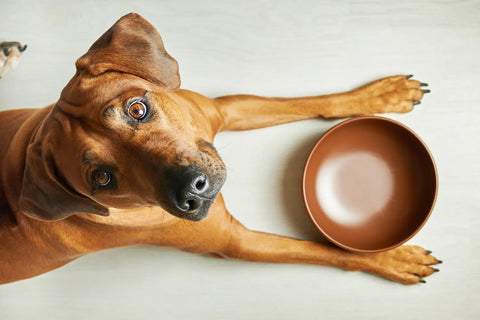
Healthy Vet-Approved Homemade Dog Food Recipes

How To Cook Sweet Potatoes for Dogs


